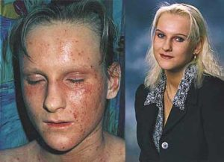Numerous studies have been done using earlier versions of a QEO type of device to reduce allergy symptoms. One study done in Austria with 200 allergy patients showed that 82% of the participants no longer had any allergy reaction after a sequence of treatments with a QEO type of device.
This is a summary of a retrospective study based on 200 cases from the practice of Dr. Peter Schumacher, a pediatrician from Innsbruck, Austria:
His success with treating allergies with this kind of technology inspired him to conduct a study of 200 cases of severe allergy and neurodermatitis in order to record the outstanding results he had been observing clinically. The study was based not on a carefully selected group but on a random patient population within a six-month period, irrespective of age, diagnosis and severity of the condition.

Results:
- 82 % of cases treated were concluded successfully (since the conclusion of therapy patients had tolerated the allergen without reaction).
- 11 % of cases treated improved (the features of the allergy were still present yet over time much less pronounced).
- 5 % The allergy remained unchanged. No therapeutic success could be identified or, after initial improvement, the same allergy recurred. However abstinence failures during therapy were detected in all members of this group.
- 2 % could not be evaluated since there had been no new contact with the allergen in the intervening period.
To highlight some particularly difficult cases: Of the 62 neurodermatitis cases recorded, 44 were symptom free following treatment and 16 were improved; and of the 33 asthma cases, 29 were symptom-free and 4 improved. Here are some before and after treatment pictures of neurodermatitis patients (These results required multiple treatments over a period of several weeks).


